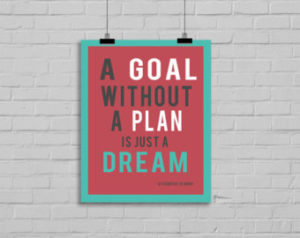7 simple steps to campaign planning
What do you want to achieve? What has triggered you to want to run a marketing campaign? Do you want to raise overall brand awareness, launch a new product into a new or an existing market, tempt customers back to your company, or lift sales in a particular demographic?
Setting campaign objectives has a key influence on what you do and how you do it. Be specific too, and include any target figures you or your Board would like to see – be realistic here, you won’t generate 300 more customer leads if the market size for your product is actually lower than that.

Obvious really. Consider how long you want your campaign to run for – 12-18 months is a good length of time usually, depending on the market and the audience.
Understanding the market context, the competition and your target audience is the key to successful campaigns. When it comes to your audience, segment them and prioritise them if needed. Talk to existing customers about why they chose your product or service and what they need. The insight gained from this step enables you to shape and differentiate your offer.
What words will you use in your campaign? Use simple, relevant and impactful messaging to get your offer across in a clear way. Consider how your core message may need to be adapted for each audience segment, and how you might build your messaging as the campaign develops over time (particularly for longer campaigns of 6+ months).

Creative brings a campaign to life. You might have the right words, but if it’s not presented in the right way, your campaign won’t grab the attention of your audience. Your campaign creative should reflect your offer and the market insight, be in keeping with your company’s overall brand and be impactful.
How are you going to get your message out to your target audience? Here, consider tactics and channels in line with your audiences’ preferences and watering holes, and your budget. Are you going to have a campaign hub, (for example a microsite) to point leads towards? Weigh up whether to take a phased approach, rolling out territories one after the other perhaps to test and learn first (depending on your resources), and switching up tactics and messaging during the campaign to build the brand story and keep the campaign fresh.
Also, look at roles and responsibilities within your team and your partners, and be sure to include training or informing sales teams or customer services if needed.
How are you going to get your message out to your target audience? Here, consider tactics and channels in line with your audiences’ preferences and watering holes, and your budget. Are you going to have a campaign hub, (for example a microsite) to point leads towards? Weigh up whether to take a phased approach, rolling out territories one after the other perhaps to test and learn first (depending on your resources), and switching up tactics and messaging during the campaign to build the brand story and keep the campaign fresh.
Also, look at roles and responsibilities within your team and your partners, and be sure to include training or informing sales teams or customer services if needed.
Get in touch if you’d like to know more about planning a b2b marketing campaign.
We’ve got a bit of experience in that area…